 W
WHenry III, also known as Henry of Winchester, was King of England, Lord of Ireland, and Duke of Aquitaine from 1216 until his death in 1272. The son of King John and Isabella of Angoulême, Henry assumed the throne when he was only nine in the middle of the First Barons' War. Cardinal Guala declared the war against the rebel barons to be a religious crusade and Henry's forces, led by William Marshal, defeated the rebels at the battles of Lincoln and Sandwich in 1217. Henry promised to abide by the Great Charter of 1225, a later version of the 1215 Magna Carta, which limited royal power and protected the rights of the major barons. His early rule was dominated first by Hubert de Burgh and then Peter des Roches, who re-established royal authority after the war. In 1230, the King attempted to reconquer the provinces of France that had once belonged to his father, but the invasion was a debacle. A revolt led by William Marshal's son, Richard Marshal, broke out in 1232, ending in a peace settlement negotiated by the Church.
 W
WThe Battle of Lewes was one of two main battles of the conflict known as the Second Barons' War. It took place at Lewes in Sussex, on 14 May 1264. It marked the high point of the career of Simon de Montfort, 6th Earl of Leicester, and made him the "uncrowned King of England". Henry III left the safety of Lewes Castle and St. Pancras Priory to engage the barons in battle and was initially successful, his son Prince Edward routing part of the baronial army with a cavalry charge. However, Edward pursued his quarry off the battlefield and left Henry's men exposed. Henry was forced to launch an infantry attack up Offham Hill where he was defeated by the barons' men defending the hilltop. The royalists fled back to the castle and priory and the King was forced to sign the Mise of Lewes, ceding many of his powers to Montfort.
 W
WThe Battle of Taillebourg, a major medieval battle fought in July 1242, was the decisive engagement of the Saintonge War. It pitted a French Capetian army under the command of King Louis IX and his younger brother Alphonse of Poitiers against forces led by King Henry III of England, his brother Richard of Cornwall and their stepfather Hugh X of Lusignan.
 W
WThe Charter of the Forest of 1217 is a charter that re-established for free men rights of access to the royal forest that had been eroded by William the Conqueror and his heirs. Many of its provisions were in force for centuries afterwards. It was originally sealed in England by the young King Henry III, acting under the regency of William Marshall, 1st Earl of Pembroke. It was in many ways a companion document to Magna Carta. The Charter redressed some applications of the Anglo-Norman Forest Law that had been extended and abused by William Rufus.
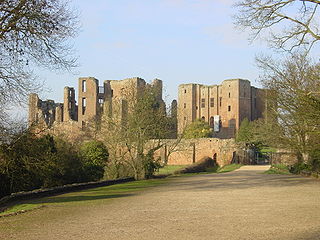 W
WThe Dictum of Kenilworth, issued on 31 October 1266, was a pronouncement designed to reconcile the rebels of the Second Barons' War with the royal government of England. After the baronial victory at the Battle of Lewes in 1264, Simon de Montfort took control of royal government, but at the Battle of Evesham the next year Montfort was killed, and King Henry III restored to power. A group of rebels held out in the stronghold of Kenilworth Castle, however, and their resistance proved difficult to crush.
 W
WThe Domus Conversorum, later Chapel of the Master of the Rolls, was a building and institution in London for Jews who had converted to Christianity. It provided a communal home and low wages. It was needed because, until 1280, all Jews who converted to Christianity forfeited their possessions to the Crown. It was established in 1232 by Henry III. With the expulsion of the Jews by Edward I in 1290, it became the only official way for Jews to remain in the country. At that stage there were about eighty residents. By 1356, the last one of these died. Between 1331 and 1608, 48 converts were admitted. The warden was the Master of the Rolls.
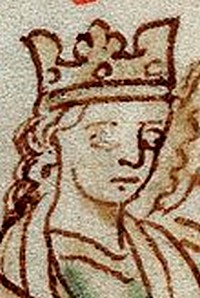 W
WEleanor of Provence was a French noblewoman who became Queen consort of England as the wife of King Henry III from 1236 until his death in 1272. She served as regent of England during the absence of her spouse in 1253.
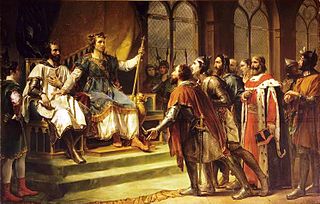 W
WThe Mise of Amiens [miz ɒv a.mjɛ̃] was a settlement given by King Louis IX of France on 23 January 1264 in the conflict between King Henry III of England and his rebellious barons, led by Simon de Montfort. Louis' one-sided decision for King Henry led directly to the hostilities of the Second Barons' War.
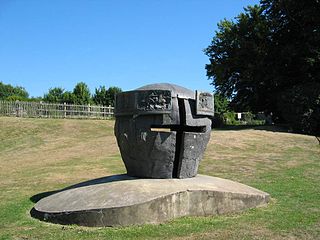 W
WThe Mise of Lewes was a settlement made on 14 May 1264 between King Henry III of England and his rebellious barons, led by Simon de Montfort. The settlement was made on the day of the Battle of Lewes, one of the two major battles of the Second Barons' War. The conflict between king and magnates was caused by dissatisfaction with the influence of foreigners at court and Henry's high level and new methods of taxation. In 1258 Henry was forced to accept the Provisions of Oxford, which essentially left the royal government in the hands of a council of magnates, but this document went through a long series of revocations and reinstatements. In 1263, as the country was on the brink of civil war, the two parties agreed to submit the matter to arbitration by the French king Louis IX. Louis was a firm believer in the royal prerogative, and decided clearly in favour of Henry. The outcome was unacceptable for the rebellious barons, and war between the two parties broke out almost immediately.
 W
WPurgatorio is the second part of Dante's Divine Comedy, following the Inferno and preceding the Paradiso. The poem was written in the early 14th century. It is an allegory telling of the climb of Dante up the Mount of Purgatory, guided by the Roman poet Virgil, except for the last four cantos at which point Beatrice takes over as Dante's guide.
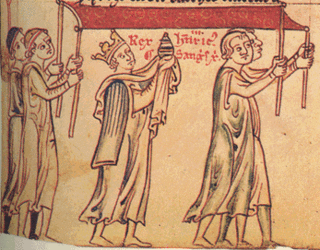 W
WThe Relic of the Holy Blood was a medieval relic, said to contain some of the blood of Jesus Christ.
 W
WThe Saintonge War was a feudal dynastic conflict that occurred between 1242 and 1243. It opposed Capetian forces supportive of King Louis IX's brother Alphonse, Count of Poitiers and those of Hugh X of Lusignan, Raymond VII of Toulouse and Henry III of England. The latter hoped to regain the Angevin possessions lost during his father's reign. Saintonge is the region around Saintes in the centre-west of France and is the place where most of fighting occurred.
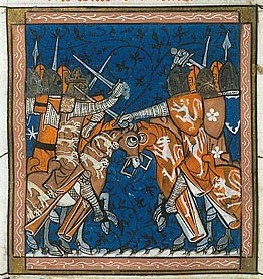 W
WThe Second Barons' War (1264–1267) was a civil war in England between the forces of a number of barons led by Simon de Montfort against the royalist forces of King Henry III, led initially by the king himself and later by his son, the future King Edward I. The barons sought to force the king to rule with a council of barons rather than through his favourites. The war also featured a series of massacres of Jews by de Montfort's supporters including his sons Henry and Simon, in attacks aimed at seizing and destroying evidence of baronial debts. To bolster the initial success of his baronial regime, de Montfort sought to broaden the social foundations of parliament by extending the franchise to the commons for the first time. However, after a rule of just over a year, de Montfort was killed by forces loyal to the king in the Battle of Evesham.
 W
WThe Statute of Marlborough is a set of laws passed by the Parliament of England during the reign of Henry III in 1267. The laws comprised 29 chapters, of which four are still in force. Those four chapters constitute the oldest piece of statute law in the United Kingdom still in force as of 2021.
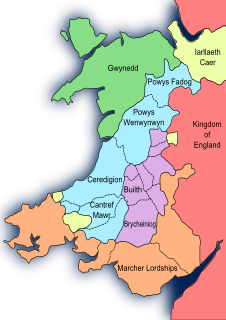 W
WThe Treaty of Montgomery was an Anglo-Cambrian treaty signed on 29 September 1267 in Montgomeryshire by which Llywelyn ap Gruffudd was acknowledged as Prince of Wales by King Henry III of England. It was the only time an English ruler recognised the right of a ruler of Gwynedd over Wales. Llywelyn's grandfather Llywelyn the Great had previously laid claim to be the effective prince of Wales by using the title "Prince of Aberffraw, Lord of Snowdon" in the 1230s, after subduing all the other Welsh dynasties. Likewise Llywelyn's uncle, Dafydd ap Llywelyn, claimed the title of Prince of Wales during his reign from 1240 to 1246. However, Llywelyn's supremacy in the late 1260s forced recognition of his authority in Wales by an English Crown weakened by internal division.
 W
WThe Treaty of Paris was a treaty between Louis IX of France and Henry III of England, agreed to on 4 December 1259, ending 100 years of conflicts between the Capetian and Plantagenet dynasties.
 W
WThe University of Northampton was based in Northampton, England, from 1261 to 1265.